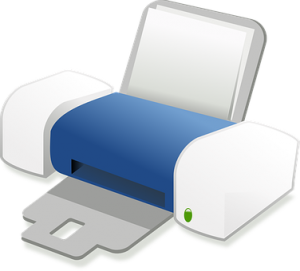Printer Setup
Setting up wireless printer may seem like a straightforward task, but for many, it can quickly turn into a frustrating and confusing ordeal. Whether you’ve just purchased a new printer, are moving your existing one to a new location, or encountering unexpected issues with your current setup, this comprehensive guide is here to help you navigate the world of printer setup with ease. In this blog, we’ll walk you through the essential steps, offer troubleshooting tips, and provide expert advice to ensure your printing experience is seamless and stress-free. So, whether you’re a tech enthusiast looking to optimize your printing setup or a novice seeking assistance, read on to master the art of printer setup.
How To Setup Wireless Printer:
Setting up wireless printer can vary depending on the type of printer you have (e.g., inkjet, laser, wireless, wired) and the specific brand and model.
- Unbox the Printer: To set up wireless printer, carefully unpack the printer and ensure you have all the necessary components, including ink or toner cartridges, power cables, and instruction manuals.
- Choose a Location: For setting up printer, place your printer in a well-ventilated area, close to a power outlet and your computer. Make sure it’s on a flat, stable surface.
- Connectivity: To set up wireless printer, determine how you want to connect your printer:
- USB Connection: If your printer requires one, connect one end of the USB cable to it and the other end to an available USB port on your computer. Windows or Mac should automatically detect the printer.
- Wireless/Wi-Fi Connection: If your printer supports wireless connectivity, follow these steps:
- Power on the printer and access its control panel or touch screen.
- Go to the printer’s settings menu and select Wi-Fi or Network Setup.
- Connect the printer to Wi-Fi network by following the on-screen instructions. You may need to enter your Wi-Fi network’s SSID and password.
- Once connected, your computer should be able to find the printer on the network.
- Printer Driver download: Check for Built-in Drivers: Many modern operating systems (Windows, macOS, Linux) come with built-in printer drivers that may automatically detect and install your printer. Connect your printer and check if it’s recognized.

- Download Drivers: If your operating system does not automatically recognize the printer, the printer drivers may need to be downloaded and installed from the manufacturer’s website.
- Testing Your Printer: Print a Test Page: After printer driver download, print a test page to ensure your printer is working correctly. You can do this through your computer’s printer settings.
- Check for Updates: It’s a good practice to periodically check for updated printer drivers and firmware for your printer to ensure optimal performance.
- Additional Considerations: If your printer uses ink or toner cartridges, follow the manufacturer’s instructions to install them correctly.
- Paper Tray Setup: To set up wireless printer, load the paper tray with the appropriate paper size and type, and adjust any paper guides to fit the paper properly.
- Printer Software: Some printers come with software that offers additional features, such as scanning and faxing. Install any included software if desired.
- Mobile Printing: If you want to print from mobile devices, check if your printer supports mobile printing options like AirPrint (iOS) or Google Cloud Print (Android).
- Printer Sharing: If you have multiple computers on a network, you can set up wireless printer sharing to allow other devices to print through the same printer. Refer to your operating system’s documentation for instructions.
By following these general guidelines, you should be able to set up printer and have it ready for printing. Remember to consult your printer’s manual for specific details related to your printer model.
How to Fix Printer Setup Issues:
Dealing with common problem with printer setup can be aggravating, but the majority of them can be fixed with a few troubleshooting steps. Here’s a guide on how to fix problem with printer setup:
- Check Physical Connections: To set up wireless printer, make sure that all cables are securely connected to both the printer and the computer. This includes power cables, USB cables (if applicable), and network cables (if using a wired connection).
- Verify Printer Power: For setting up wireless printer, make sure the printer is powered on and displaying no error lights or messages on its control panel. If there are error messages, consult the printer’s manual or display screen for guidance.
- Restart the Printer: To setup up printer, turn off the printer, Unplug it from power source, wait a minute, and then reconnect it. Turn the printer back on. This can help reset any temporary issues.
- Check Ink or Toner Levels: If you’re encountering print quality problems or blank pages, check the ink or toner levels in the printer. Replace cartridges if they are low or empty.
- Reinstall Printer Drivers: Outdated or corrupted printer drivers can cause setup issues. Remove any existing printer drivers from your computer and reinstall them. Get the most recent drivers from the manufacturer’s website.

- Clear Print Queue: If print jobs are stuck in the print queue, they can block new print jobs. To clear the print queue:
- In Windows: Go to Control Panel > Devices and Printers, right-click your printer, and select “See what’s printing.” Then, click “Cancel All Documents.”
- In macOS: Open System Preferences > Printers & Scanners, select your printer, and click “Open Print Queue.” Then, click “Clear Print Queue.”
- Restart Your Computer: Sometimes, a simple computer restart can resolve printer setup issues by refreshing system settings.
- Check for Software Conflicts: Ensure that no other printer-related software is conflicts with your printer setup. Uninstall any unnecessary or conflicting printer software.
- Reconfigure Wireless Connection: If using a wireless printer, ensure it is connected to the correct Wi-Fi network. Re-enter the Wi-Fi credentials if necessary. Also, make sure your computer is connected to the same network.
- Firewall and Security Software: Check if your firewall or security software is blocking the printer’s communication. Disable these programs temporarily to determine whether they are causing the issue.
- Run Troubleshooters: Both Windows and macOS have built-in printer troubleshooters. Run these tools to automatically diagnose and attempt to fix common printer issues.
- Firmware Updates: Check if there are firmware updates available for your printer. Updating the printer’s firmware can sometimes resolve compatibility issues.
- Test with Another Device: To see whether the problem persists, connect the printer to a different computer or device. This can help in determining whether the problem is with the printer or the computer.
Remember that printer setup issues can vary based on the printer model and the computer’s operating system. Patience and a systematic approach to troubleshooting are key to resolving these problems.
Conclusion:
In conclusion, setting up printer doesn’t have to be a daunting task. With the right knowledge and a systematic approach, you can tackle printer setup and troubleshooting confidently. We’ve covered the essential steps to get your printer up and running smoothly, from connecting the hardware to installing drivers and resolving common issues. Remember, each printer model may have its quirks, but the principles outlined in this guide can serve as a solid foundation. Don’t hesitate to consult your printer’s manual or the manufacturer’s support resources for model-specific instructions. To know more about our support services, you can navigate to our website’s Homepage.
